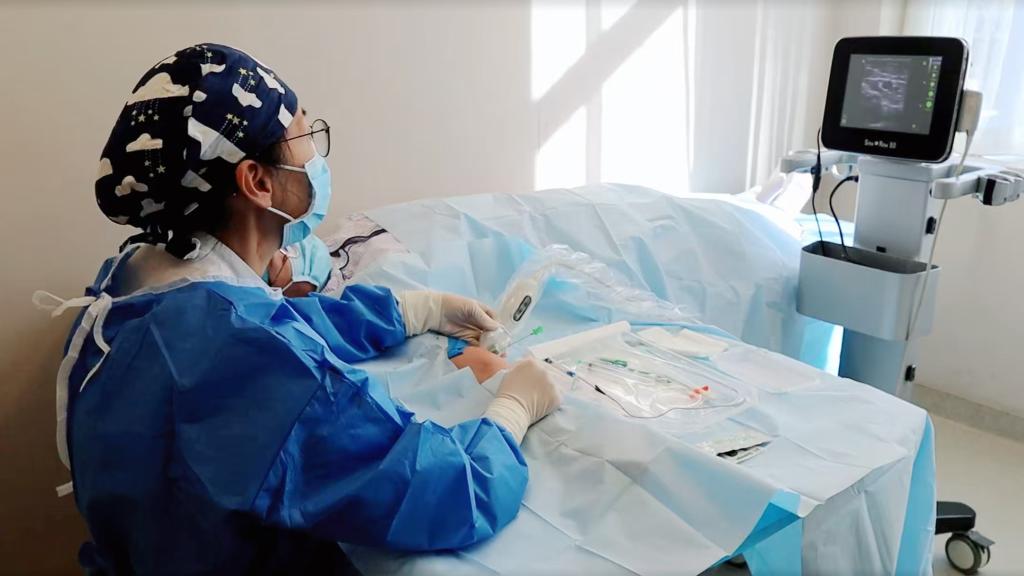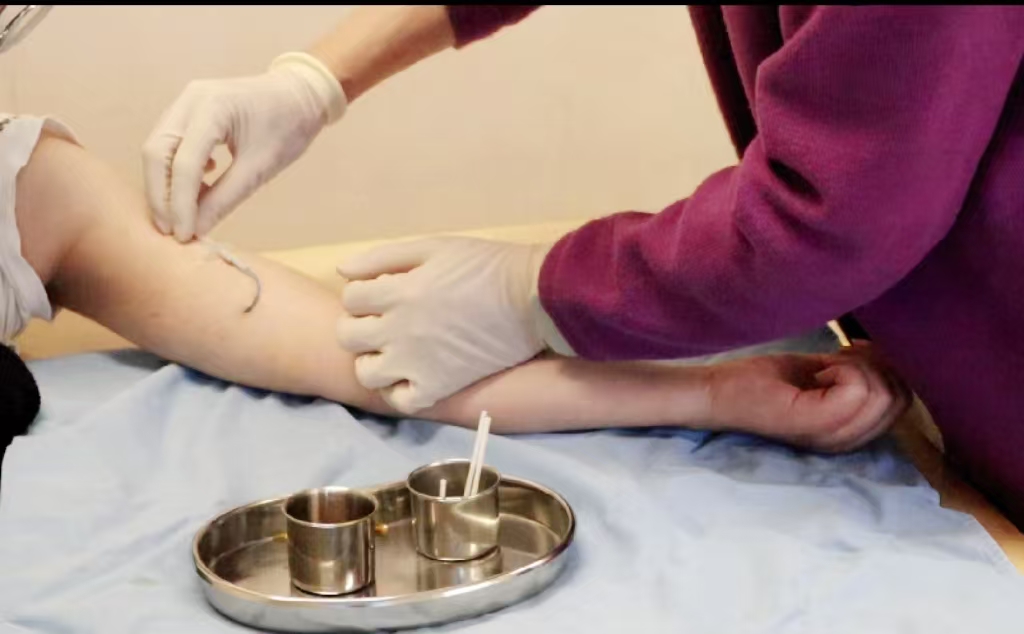Xinhua News Agency, Beijing, February 21, Title: Benefits more than 3 million patients! Central intravenous drug delivery ushers in price reduction
Xinhua News Agency reporter Xu Penghang
After the standardized treatment of CT and tumor markers and other examination and testing projects, another important price management achievement has brought good news to more than 3 million patients who need chemotherapy and long-term infusion - central intravenous drug delivery will usher in price reduction!

Sun Wenyan, head nurse of the Clinical Nutrition Department of Peking Union Medical College Hospital, is performing a transperitoneal venous puncture central venous catheter (PICC) catheter for patients. Photo by Xinhua News Agency reporter Xu Penghang
The National Health Insurance Administration sent a letter on the 21st to inform all localities of the comprehensive management of central intravenous drug delivery prices, involving infusion ports (PORT), transperitoneal venous puncture central venous catheter (PICC) and central venous catheter (CVC). The relevant fees will be adjusted in the near future.
The overall cost of PORT will be reduced from around 6,000 yuan to around 3,300 yuan; the overall cost of PICC will be reduced from around 3,000 yuan to around 1,300 yuan; the overall cost of CVC will be reduced from more than 800 yuan to around 450 yuan... Behind the price reduction is the heartwarming of making patients more convenient for treatment, and it is also the peace of mind for "reducing the burden" for patients and their families.
Central venous administration is a method of direct drug input through a large vein close to the heart. The catheter used is usually only about 1.5 mm in diameter, but it is the patient's "life channel". After the catheter is implanted, it can not only be left in the body for a long time, saving the patient from the pain of repeated punctures, but also allowing the drug to "directly reach" large veins near the heart and reduce vascular damage. However, its high costs often become a burden to patients, and even some patients "defend" them.
For the health and well-being of patients, the National Health Insurance Administration continues to carry out price management to squeeze out the price moisture caused by excessive price increase in circulation links. Previously, the National Health Insurance Administration has guided Henan Province to take the lead in volume-based procurement of related consumables. This price management will further guide more central intravenous drug delivery consumables to be more reasonable.

Nurses in Peking Union Medical College Hospital provide patients with transperitoneal venous puncture central venous catheter (PICC) maintenance. Photo by Xinhua News Agency reporter Xu Penghang
"Patients can use drug delivery devices that can be left in the body for relatively long periods, which is conducive to reducing the physiological and economic burdens brought by long-term treatment, and also helping to improve the accessibility of related products and promoting the improvement of medical services." said Sun Wenyan, head nurse of the Clinical Nutrition Department of Peking Union Medical College Hospital.
While squeezing unreasonable prices and "reducing burden" for patients, it is crucial to regulate the prices of medical services.
"The technical labor costs of central intravenous drug delivery have been greatly different in various places before. The prices in a few provinces are high, while the prices in most provinces are relatively low." A relevant person in charge of the National Medical Insurance Administration said that in this regard, this comprehensive price governance has unified the name and price level of relevant medical service price items. The National Medical Insurance Administration guided a few high-priced provinces to lower prices, and other low-priced provinces to appropriately raise prices. The specific price level can fluctuate up and down around the benchmark price by no more than 10%.
"Central intravenous drug delivery has high technical requirements for medical staff. Unified and standardized technical labor costs will help more reasonably reflect the labor value of medical staff, and it is also an affirmation of medical staff." Sun Wenyan said.
Price management is a "heart-warming strategy" to reduce the burden on patients, a "bridge of heart" to communicate with doctors and patients, and an "ice-breaking move" for medical reform to enter the deep waters. It is reported that the National Health Insurance Administration will continue to carry out related work on medical price management to make more affordable people's livelihood warm and illuminate the road to health.